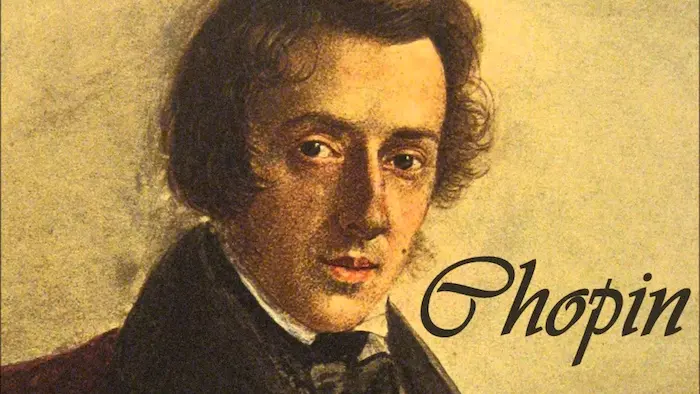Mazurkas are a traditional Polish folk dance that has evolved into a celebrated musical form. Characterized by their lively tempo, distinctive rhythm, and rich cultural history, mazurkas have left an indelible mark on both folk and classical music. This article delves into the origins, characteristics, evolution, and notable composers associated with mazurkas, offering a comprehensive understanding of this captivating genre.
I. Origins of the Mazurka
Folk Roots
The mazurka originates from the Mazovia region of Poland. It began as a peasant dance in rural villages, performed at social gatherings and celebrations. Its name is derived from “Mazur,” the name given to the inhabitants of the Mazovia region.
Traditional Dance Form
Mazurkas are traditionally danced in triple meter, with a strong accent on the second or third beat. This gives the dance its distinctive, syncopated rhythm. The dance involves a series of quick, intricate steps, often performed with a partner. Over time, various regional variations of the mazurka emerged, each with its own unique style and steps.
II. Evolution into a Musical Form
Classical Adaptation
In the 19th century, the mazurka was adopted by classical composers who transformed it into a sophisticated musical form. The most notable of these composers is Frédéric Chopin, who composed over 50 mazurkas for solo piano. Chopin’s mazurkas are renowned for their emotional depth and technical complexity, elevating the dance form to a significant genre in classical music.
Chopin’s Influence
Chopin’s mazurkas retain the folk dance’s rhythmic characteristics while incorporating his unique musical style. They often feature sudden tempo changes, intricate ornamentation, and rich harmonic progressions. Chopin’s mazurkas are celebrated for their ability to evoke the spirit of Polish folk music while showcasing his innovative compositional techniques.
III. Characteristics of the Mazurka
Rhythm and Meter
Mazurkas are typically written in triple meter (3/4 time), with an emphasis on the second or third beat. This accentuation creates a distinctive syncopation that sets the mazurka apart from other dances. The rhythm can vary from a steady, flowing tempo to a more brisk and lively pace.
Melodic and Harmonic Elements
Melodically, mazurkas often feature simple, folk-like themes that are embellished with ornaments and variations. Harmonically, they can range from straightforward diatonic progressions to more complex chromatic passages. The use of modal scales and unexpected modulations adds to the unique character of mazurkas.
Form and Structure
Mazurkas typically follow a ternary (ABA) form, with a central contrasting section. However, composers often experiment with the structure, incorporating elements such as repetitions, variations, and codas. This flexibility allows for a wide range of expressive possibilities within the mazurka form.
IV. Notable Composers of Mazurkas
Frédéric Chopin
Chopin is undoubtedly the most famous composer of mazurkas. His works in this genre are celebrated for their emotional depth and technical brilliance. Chopin’s mazurkas often reflect his deep connection to Polish folk music and his longing for his homeland, which he left as a young man.
Karol Szymanowski
Another significant Polish composer who contributed to the mazurka repertoire is Karol Szymanowski. His mazurkas, written in the early 20th century, blend traditional folk elements with modernist techniques. Szymanowski’s mazurkas are known for their rich harmonic language and innovative use of rhythm and form.
Alexander Scriabin
Although not Polish, the Russian composer Alexander Scriabin was influenced by Chopin’s mazurkas. He composed several mazurkas in his early career, which reflect both the traditional characteristics of the dance and his evolving musical style. Scriabin’s mazurkas are notable for their harmonic complexity and expressive depth.
V. Cultural Significance of Mazurkas
National Identity
Mazurkas hold a special place in Polish culture, symbolizing national pride and identity. During periods of political turmoil and foreign occupation, the mazurka served as a reminder of Poland’s rich cultural heritage. Composers like Chopin used the mazurka to express their patriotism and solidarity with the Polish people.
Influence on Other Genres
The mazurka’s influence extends beyond Polish folk and classical music. It has inspired composers and musicians worldwide, contributing to the development of various musical styles. In particular, the syncopated rhythms and danceable quality of mazurkas have left their mark on genres such as jazz and popular music.
VI. Mazurkas in Contemporary Music
Modern Composers
Contemporary composers continue to explore and reinterpret the mazurka form. By incorporating elements of modern harmony, rhythm, and instrumentation, they keep the tradition of the mazurka alive while pushing its boundaries. This ongoing evolution ensures that the mazurka remains a vibrant and relevant musical form.
Fusion with Other Genres
In recent years, there has been a trend of fusing mazurkas with other musical genres. Jazz musicians, for example, have experimented with incorporating the syncopated rhythms of mazurkas into their improvisations. This cross-genre exploration highlights the versatility and enduring appeal of the mazurka.
See Also: A Deep Dive into the Era of Classic Music: All You Want to Know
VII. Conclusion
Mazurkas are a testament to the enduring power of folk traditions and their ability to inspire and transform through time. From their humble origins in rural Poland to their elevation as a significant classical form, mazurkas continue to captivate musicians and audiences alike. Through the works of composers like Chopin and Szymanowski, the mazurka remains a vital and evolving part of the musical landscape, celebrating both its cultural heritage and its potential for innovation.

